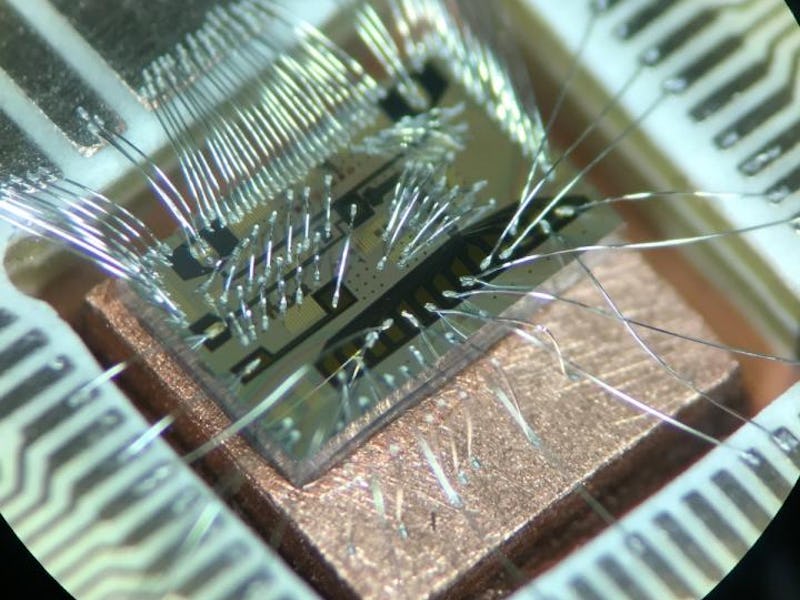Silicon Chips See Major Quantum Computer Advance, Say Researchers
Transmitting from qubit to qubit.

Quantum computers are the ever-elusive holy grail of modern-day engineering. Their quantum quirkiness and ability to go beyond the limits of binary thinking would allow them to solve incomprehensibly complex problems that even today’s best supercomputers can’t handle.
Key to any successful quantum computer is the qubit, the quantum equivalent of the bit of information in traditional computer. Well, scratch that: What’s really key is the ability to build a computer with qubits — plural — that can all communicate with one another and transmit information without breaking down.
A team of scientists from the Delft University of Technology in the Netherlands have made big strides in realizing that goal. In a paper published Wednesday in the peer-review journal Science, the group explains that they were able to transfer quantum information — specifically, the spin of an electron — to a photon on one silicon chip.
Coupling these together is a significant advance in quantum communication, one that opens the door to producing large groupings of qubits housed on one chip that can then all interact even if they aren’t positioned right next to each other. This is exactly what would be needed to create a full-fletched quantum computer.
“To use a lot of qubits at the same time, they need to be connected to each other; there needs to be good communication”, explained Nodar Samkharadze, the lead author of the paper, in a statement. The trouble is that it’s only possible for current qubits on a silicon chip to communicate when they are next to each other. “That makes it tricky to scale up to large numbers of qubits.”
Photons, however, have been shown to enable longer-distance quantum communicate, so coupling the electron spin with a photon is what opens up the possibility of transferring information between qubits on opposite sides of the chip. It’s possible to connect everything on this still highly theoretical quantum silicon chip together without having to worry about close physical proximity.
Instead of breaking down data into binary — a series of ones and zeros — like traditional computers, quantum computers represent data using qubits. Unlike binary, these subatomic particles can be a one and a zero at the same time. This allows quantum computers to carry out multiple operations in tandem, as one data point can actually represent more than one thing.
This would make it possible to solve problems that flummox today’s most advanced computers. But in order to make this possible, scientists need computer chips that can hold a large number of qubits that can all communicate with one another. It remains very early days, but this latest advance from Delft and similar work elsewhere could prove a keep small step on the way to the giant leap.
Check out this video where scientists want to build a quantum computer the size of a soccer field.